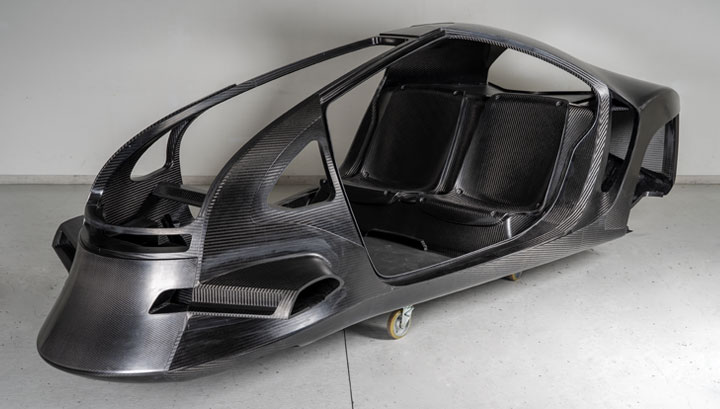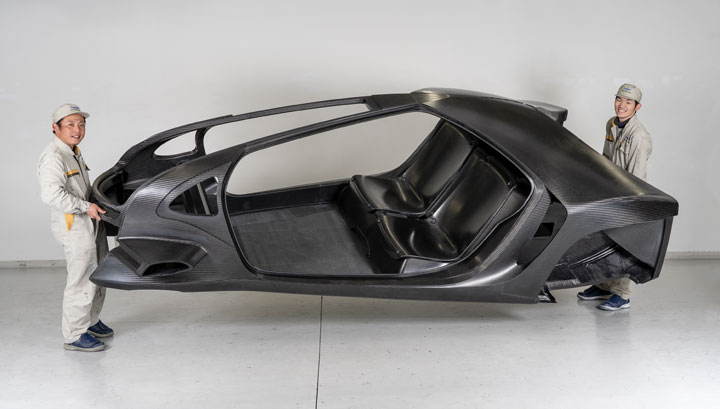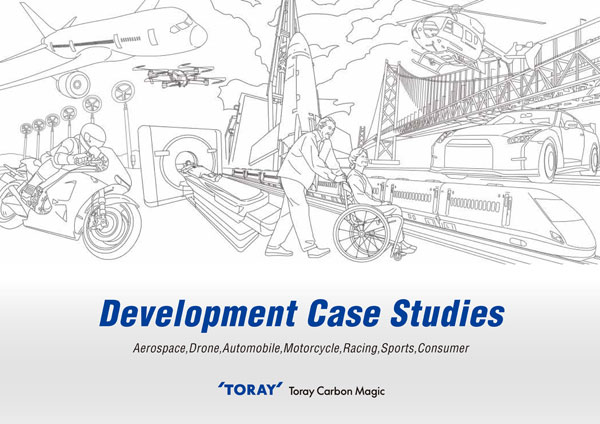Concept EV "ItoP" Monocoque Made of CFRP
Realization of Lightweight of 50 Percent or More, Compared to Conventional Metal Monocoque Frames with Drastic Reduction in The Number of Parts
From the viewpoint of lightweight, high rigidity, and crashworthiness, the vehicle frame was constructed as a single molded part with use of a monocoque structure that also serves as the outer panel body. Combined with the excellent physical properties of the composite material made from carbon fiber and thermosetting resin, this contributed greatly to the concept being achieved. In addition to increasing freedom of design through the features of large-opening doors, a rational body layout was made possible by achievement of an extreme reduction in the number of parts, resulting in a drastic reduction in weight. The weight has been reduced by 50 percent or more from the 300 kg required for a conventional metal monocoque frame to 140 kg.
| Client | Japan Science and Technology Agency (JST) |
|---|---|
| URL | https://www.jst.go.jp/impact/shinayaka/special/itop.html |
| Application | Concept EV Electric Vehicle |
| Development Part | Monocoque Body |
| Required Characteristics | ー |
| Development Scope | Structural Analysis / Fluid Analysis / Design / Material Selection / Evaluation Testing / Prototyping Molding Method Selection / Manufacturing / Production Technology |
| Development Period | ー |
| Molding Method | Autoclave |
| Size | ー |
| Weight | 140kg |


